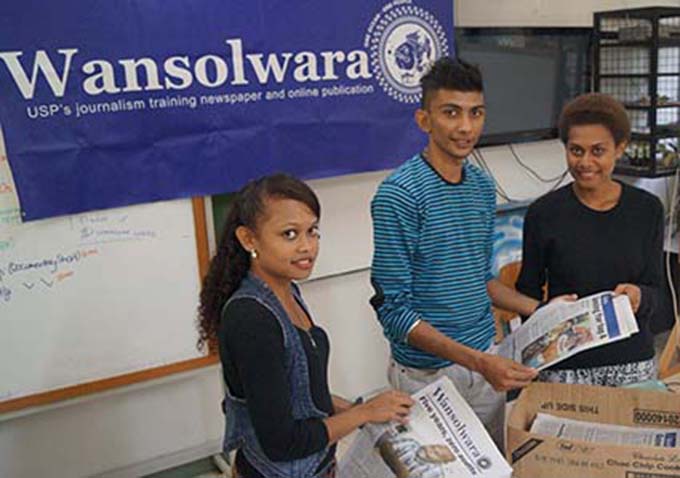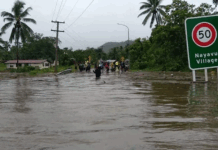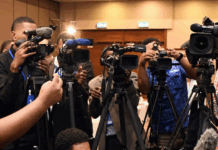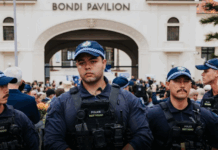
Report by Pacific Media Centre
By Kai Ping Lew
The editorial supervisor watches the students like a hawk as they type frantically, occasionally barking questions about their stories.
Her eyes alternate between scanning the laptop in front of her and monitoring the progress of her reporters-in-training doing their best to meet the looming print deadline.
The modest classroom is a makeshift newsroom, home to the award-winning University of South Pacific’s Wansolwara student newspaper. Wansolwara is pidgin for “one ocean, one people” and the newspaper covers serious local and regional issues.
Founded by the students, its humble beginnings go back to 1996, with 13 first-year student journalists, two passionate lecturers, and the seed of an idea.
“There were two things we were thinking when we started Wansolwara. One was that University of South Pacific used to be a hub of student activism in the 1980s, and we wanted to revive that spirit,” says Stanley Simpson, Wansolwara’s first editor.
“The second was that as journalism students, we wanted a platform that could be used to showcase our work.”
As student publications went, the small team started out with ambitious and in-depth stories, covering topics from school affairs, politics and current affairs in hard news and satirical styles that quickly brought them to the attention of the local media.
“I remember that from the early days, we were already writing stories challenging authorities like the government, stories that the mainstream media didn’t even want to go near,” says Simpson.
Still going strong
Nineteen years later, Wansolwara is still going strong and was early on integrated into the curriculum of the journalism degree offered at USP.
Simpson is now editor of Business Melanesia and maintains friendly relationships with his previous lecturers.
Wansolwara is now the longest surviving student publication in the Pacific region and continues to cover serious news on a quarterly basis.
It is printed as liftout in the daily newspaper Fiji Sun and also mailed around the Pacific region. With more than 20,000 copies it has the largest circulation of any student newspaper in Australasia or the Pacific.
Wansolwara has won numerous awards both at national and international level including the Fiji Media Excellence awards, the Pacific Islands News Association (PINA) awards, and Australia’s Journalism Education and Research Association (JERAA) Ossie Awards.
“A major strategic advantage for Wansolwara is that it does not face some of the restrictions the mainstream media does in the Fijian context, such as the ownership structure and the commercial pressures that come with it,” says USP journalism programme co-ordinator Dr Shailendra Singh.
He adds that USP gets some talented and enthusiastic students who are able to produce high-quality work under the guidance of the lecturers.
“I think Wansolwara offers an opportunity for students to cover news, and there’s a lot to cover both at USP and in the region. The students really like working on the paper and the learning outcomes are quite good.”
Crash course
Sharol Kondaiya has been writing for Wansolwara for seven months and credits the experience for giving her a crash course in practical news-gathering skills.
“There’s always something new for me to learn every time I work on a story, and the guidance our editor Irene gives us highlights our mistakes and shows us where we can still improve,” says Kondaiya.
Third year student Emmanuel Duane Mar made a gamble when he picked up journalism after dropping economics as his second major.
“Journalism was a risk for me because I initially didn’t ever consider it as a career path,” he says.
“Most (journalists) are overworked and underpaid, and in Fiji the government can crack down hard upon media for critical reports against it.”
Mar has covered significant issues in the region in his tenure at Wansolwara, including coverage on the negative impacts that pollution from a resort was having on a village along the Coral Coast which garnered some mainstream media attention.
“I learned a lot here. Met people, took risks, fell and got back up. I wouldn’t replace it for anything.”
Threats, problems
It’s not all rainbows and roses as the students face problems ranging from threats to being ostracised in their role as Wansolwara journalists.
A student investigating the misuse of funds by the USP Student Association was assaulted, and in another incident Samoan student Vicky Lepou who wrote about the decreasing pass rates of Samoan students faced backlash both from her peers and the Samoan government. (Today she is Misa Vicky Lepou and a journalism lecturer at the National University of Samoa.)
“Pacific Islands nations are very strongly bound by their culture, so social and cultural ostracisation can be quite a serious thing,” says Singh.
“These are unwelcome developments, but in some respects we’ve come to accept them as part of the job of training journalists. This is the reality they will face in the real world, and we get an opportunity to learn how to cope with them these things happen.”
For supervising chief editor Irene Manarae, who left a long and respectable career as a Fiji Times senior journalist to take up the job, the position offers its own unique compensation.
Guiding, educating
“The reason I took up this position was in order to guide and educate the upcoming generation of journalists,” she says.
Manarae believes that despite the chilling effect placed by the Fiji Media Industry Development Decree, she believes there is still room for journalists – including student journalists – to write stories which encourage healthy debate about issues in the public interest.
“The most rewarding thing, for me, is when our students choose journalism as a career. It’s difficult and doesn’t pay well, but when students decide to answer that calling, I feel like what we do here is worth it.”
Kai Ping (KP) Lew is in the 2015 Asia-Pacific Journalism Studies paper and is doing an honours programme in journalism at AUT University. She was recently in Fiji.
The Wansolwara story – a Pacific Journalism Review history
—











































